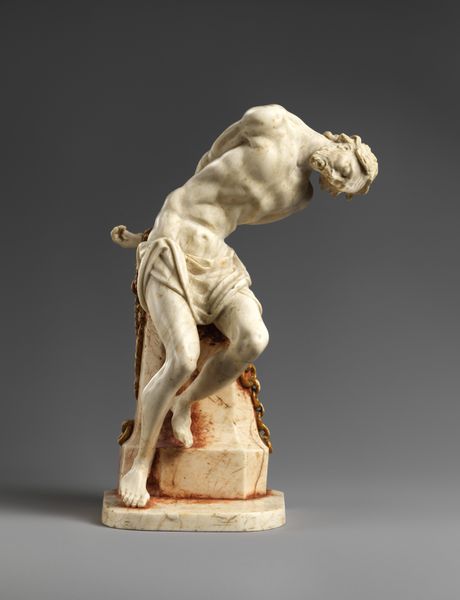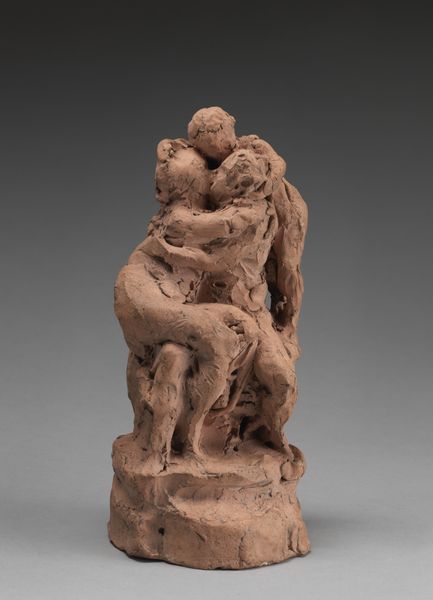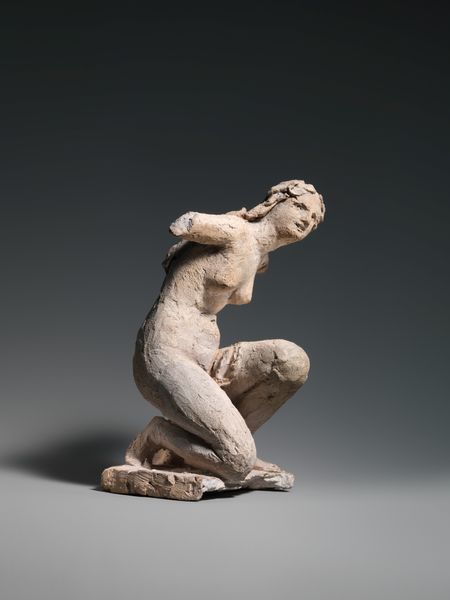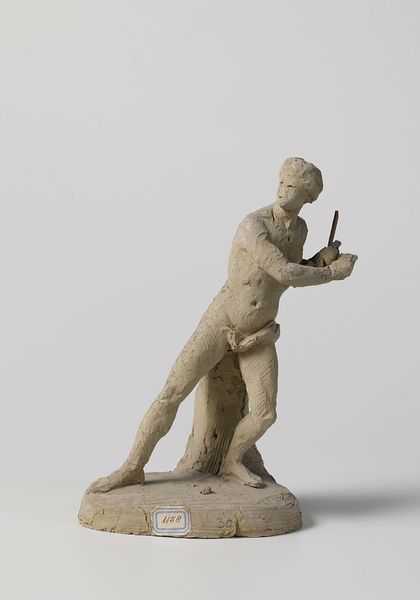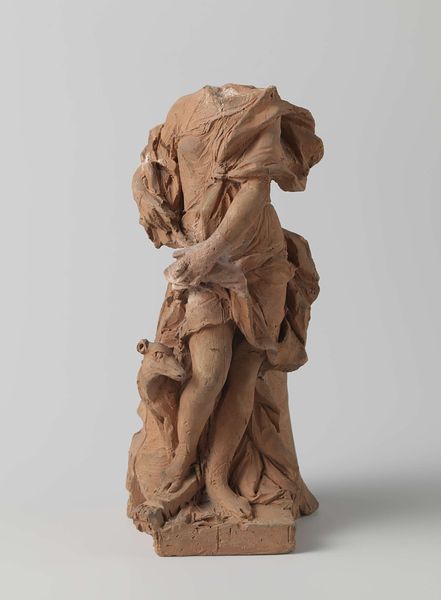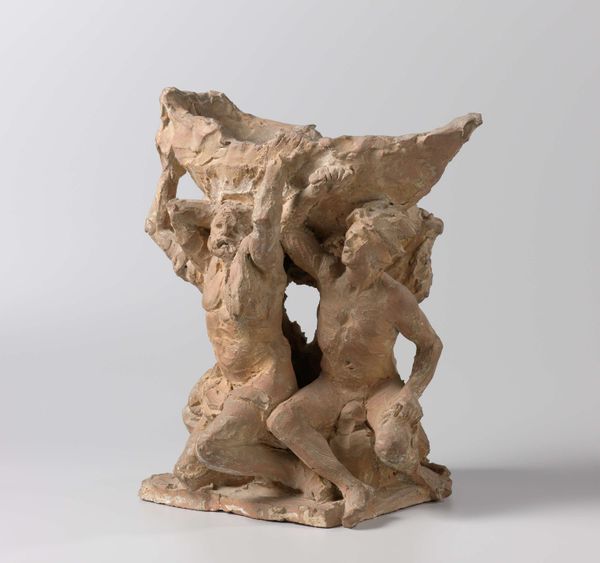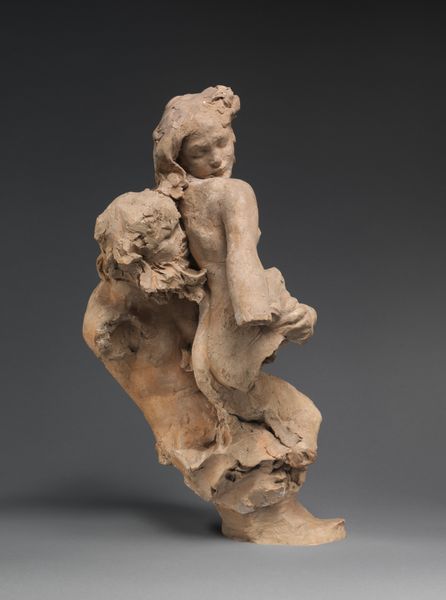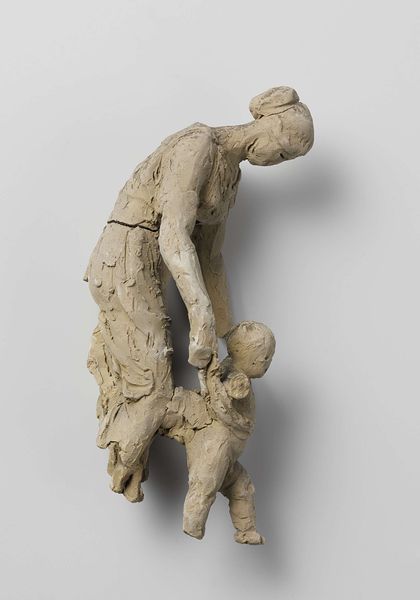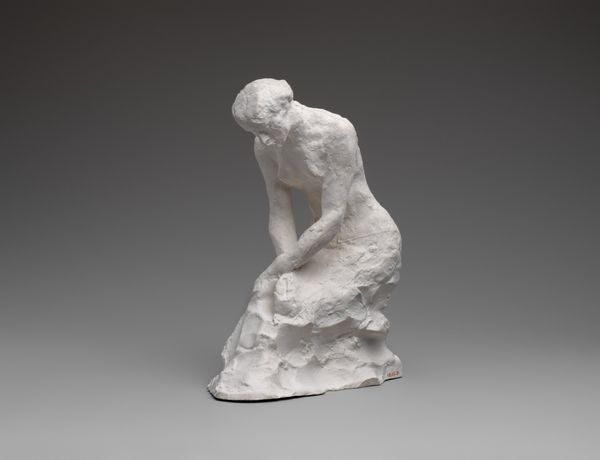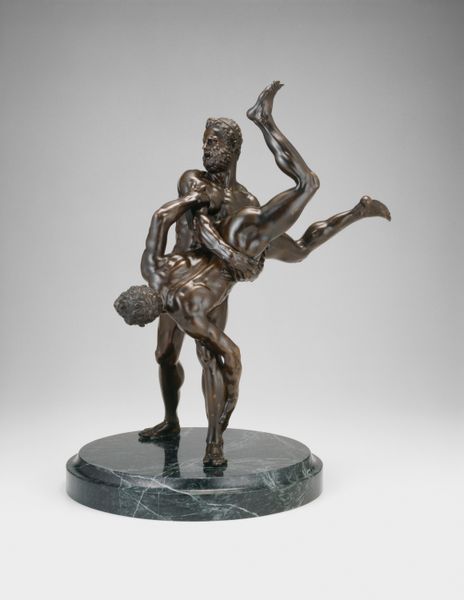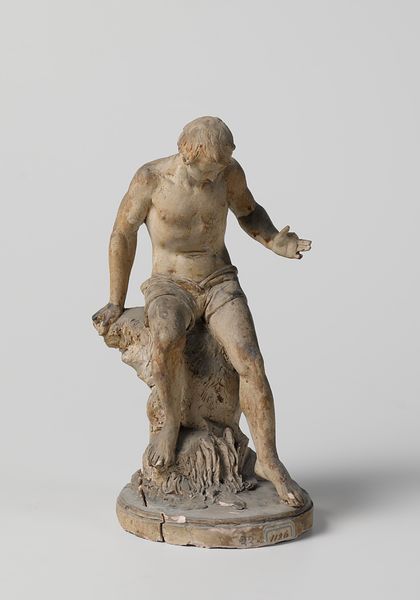
Pair of Standing Nude Male Figures Demonstrating the Principles of Contrapposto according to Michelangelo and Phidias 1906 - 1916
0:00
0:00
sculpture
#
sculpture
#
decorative-art
#
modernism
Dimensions: Height (.1, wt. confirmed): 14 1/2 in., 6.6 lb. (36.8 cm, 3 kg) Height (.2, wt. confirmed): 14 1/2 in., 5.2 lb. (36.8 cm, 2.4 kg)
Copyright: Public Domain
These two standing nude male figures demonstrating contrapposto were made by Auguste Rodin, likely sometime in the late 19th or early 20th century. Rodin, working in France during a period of rapid social and political change, looked to the classical past to inform his contemporary sculpture. Note how Rodin invokes the legacies of Michelangelo and Phidias in the title, signaling his ambition to connect with and reinterpret the canon of Western art. Contrapposto, the naturalistic stance where a figure’s weight rests on one leg, was a technique the Greeks used to bring life to sculpture. Yet, here the rough surfaces and fragmented forms also speak to modernity’s disruption. Through these figures, consider the tension between idealized forms and the realities of the human body. What does it mean to represent the male nude in a time of changing gender roles and social norms? What is Rodin telling us about what we inherit from history and what we break away from?
Comments
No comments
Be the first to comment and join the conversation on the ultimate creative platform.
